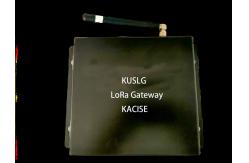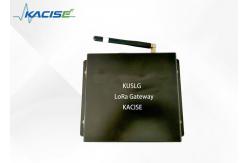Wireless Differential Pressure Transmitter Operating Current 562mA,Emission Frequency Vs Temperature ±3ppm
|
|
LoRa Gateway
1.Introduction
LoRa is a wireless spread spectrum communication technology, and LoRaWAN is a LoRa-based communication protocol. As shown in the figure above, LoRaWAN defines Node, Gateway and Server,a total of 3 entities, at the same time, defines the communication interface between entities, and in order to ensure the "interconnection" of global manufacturers' products, the LoRaWAN protocol (currently, the latest versionis V1.0.2) and the frequency bands of various countries (regions) are disclosed. LoRaWAN has become one of the industry standards for the Internet of Things with its "standard, open, free and secure", and it is believed that it will be as successful as the IP protocol 30 years ago.
2.Feature
3.Technical Specifications
4.Power supply and installation
As shown in the figure below, use the "12V Power Adapter" (gateway accessory) to power the "Gateway" and connect to the Internet/Intranet through the "Router".
5.Dimensions
6.Rate and frequency
6.1 Rate sensitivity distance As shown in the table below, the base station supports 6 communication rates.The higher the rate, the closer the effective communication distance, and the lower the rate, the longer the effective communication distance.
In order to simplify the use, the communication rate is dynamically set by the server, and its rules are: the node close to the base station and the signal is good, the high rate is adopted, and the node far away from the base station and the signal is weak, the low rate is used. This is called ADR (Adaptive Data Rate) technology.
6.2 LoRa Signal indicators Field strength value RSSI: normal value -120 ~ -10 dBm, below -125 dBm packet loss rate will be higher. SNR: Limit value -20 dB.
6.3 Communication frequency
7 Communicate with nodes
In general, the base station and node communicate well. If the communication fails, troubleshoot the cause in the following order:
8.Interface definition The base station strictly follows the LoRaWAN GSID (Gateway to Server Interface Definition) standard.
Generally speaking, as long as the following 3 parameters are set, the base station can be connected to "any" LoRaWAN Server. 1) server_address (Explanation: the domain name address of the server, e.g. router.cn.thethings.network) 2) serv_port_up (Explanation: UDP port uploaded to the server by the base station, default is 1700) 3) serv_port_down (Explanation: The server goes down to the UDP port of the base station, the default is 1700)
The protocol stack of the LoRaWAN GSID is shown in the following figure
9.Common Problems and Solutions
Q: Why is the packet loss rate high between base stations and nodes? A: Please check if the antenna is properly installed and matched. Base station <--> whether the Internet/intranet network environment of the server is smooth. Whether the receiving environment is harsh, such as: obstacles are very dense and there are strong interference sources. Whether the node has ADR turned on to reduce co-channel interference. Q: What should I pay attention to in the proximity test? A: Base stations and nodes should be more than 10 meters apart as much as possible. Indoor base station Install the "fiberglass" antenna <--> node to remove the antenna Indoor base station Install a "glue stick" antenna <--> node to install a "glue stick" antenna Q: 4G communication quality is poor and packet loss rate is high. A: Please check if the 4G antenna is installed correctly and matched. Check your local 4G signal quality.
10.Configuration Parameters Step 1: Prepare your network environment
The default value of the base station is 192.168.1.99, please set the PC to 192.168.1.100, and connect the base station and the PC directly through the network cable.
If you want the base station to be directly connected to the LoRaWAN Server in the LAN, you can set the base station to a static IP, at this time, be sure to record the IP address (as shown in the figure above 172.16.0.123), otherwise,the PC will fail to connect to the base station! Principle: The PC with the configuration parameters must be on the same network segment as the base station (for example, 192.168.0.x or 172.16.0.x).
Step 2: Log in to the base station using a browser Enter the base station IP address, user=guest, password=rimelink, and click "Login".
Step 3: Configure parameters Support settings: server address and port, frequency, power, IP address. Click "OK" and it will take effect immediately!.
11.View logs
Diagnosis 1: Whether the node reports data RF packets received by concentrator: 131 <-- Received 131 LoRa packets Diagnosis 2: Whether the server responds to the Gateway handshake packet (Firewall Enabled) PULL_DATA sent: 5(100.00% acknowledged) <-- The base station and the server have 5 handshakes normally Diagnosis 3: Whether the server delivers node data RF packets sent to concentrator: 2 (46 bytes) <--The base station transmits two downlink LoRa packets |
||||||||||||||||||||||||||||||||||||||||||||||||||||||||||||||||||||||||||||||||||||||||||||||||||||||||||||||||||||||||||||||||||||||||||||||||||||||||||||||||||||||||||||||||||||||||||||||||||||
| Product Tags: 8000V ESD Wireless Differential Pressure Transmitter 562mA Wireless Differential Pressure Transmitter 8000V ESD Wireless Pressure Transmitter | ||||||||||||||||||||||||||||||||||||||||||||||||||||||||||||||||||||||||||||||||||||||||||||||||||||||||||||||||||||||||||||||||||||||||||||||||||||||||||||||||||||||||||||||||||||||||||||||||||||
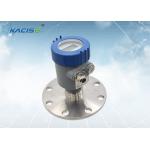
|
Led display,High Accuracy Wireless Pressure Transmitter For Metallurgical Industry,Zigbee wireless communication |
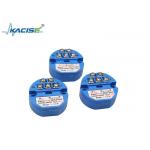
|
SBWZ-PT100 Integrated Temperature Transmitter Module |
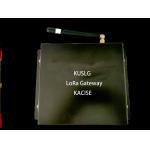
|
Wireless Differential Pressure Transmitter Operating Current 562mA,Emission Frequency Vs Temperature ±3ppm |
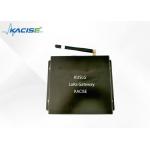
|
The long-distance LoRa wireless communication module has an Operating current of 562mA and an RF transmit power of 17dBm |
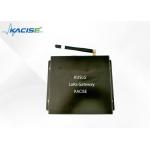
|
LoRa Gateway Supports ADR Higher Rate Lower Energy Consumption Supply Voltage 12V ESD 8000V |
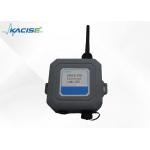
|
Multifunctional Sensor Data Acquisition Box Operating Temperature -40℃ ~ +85℃ Transmit Current ≤125mA |

